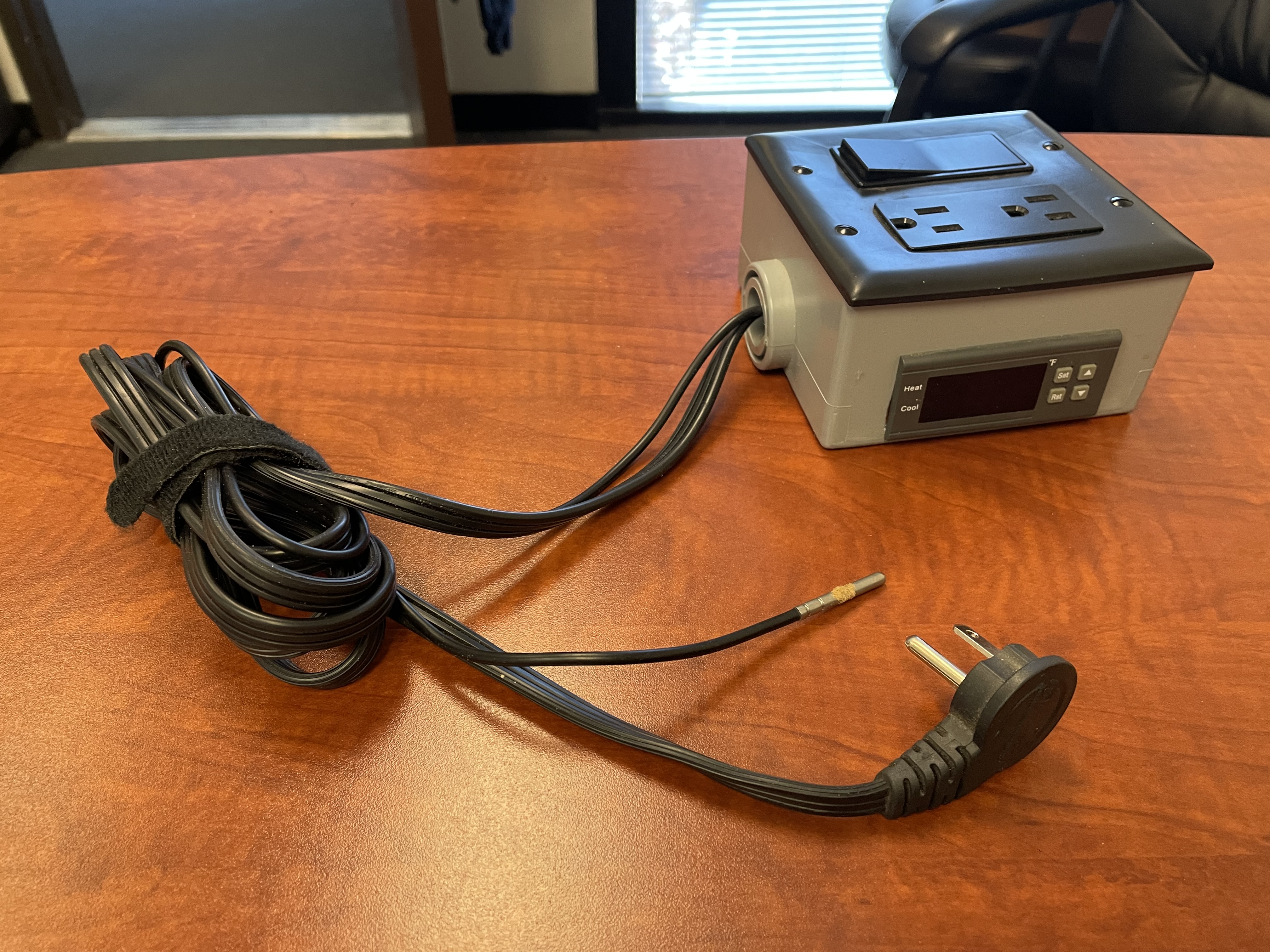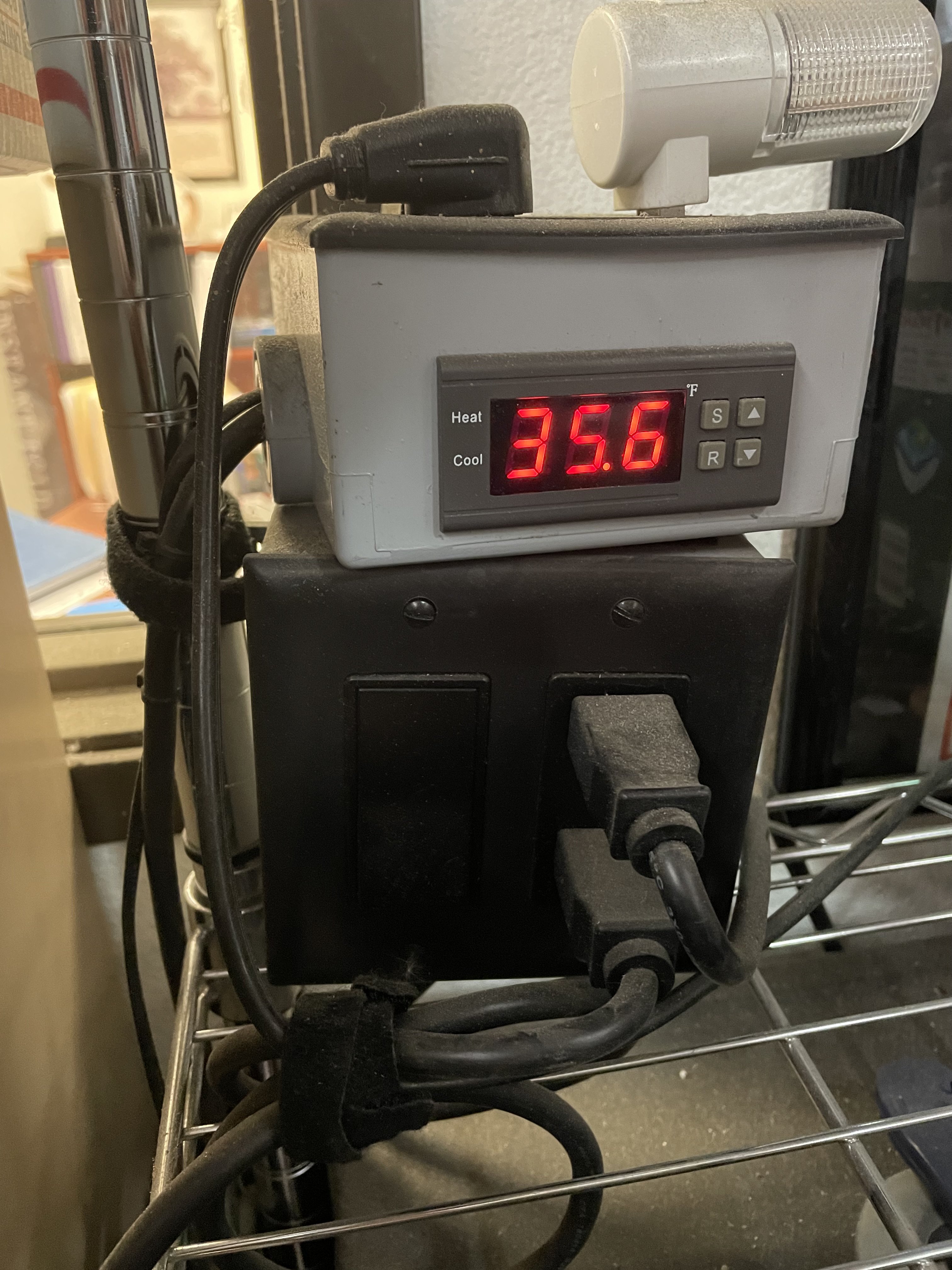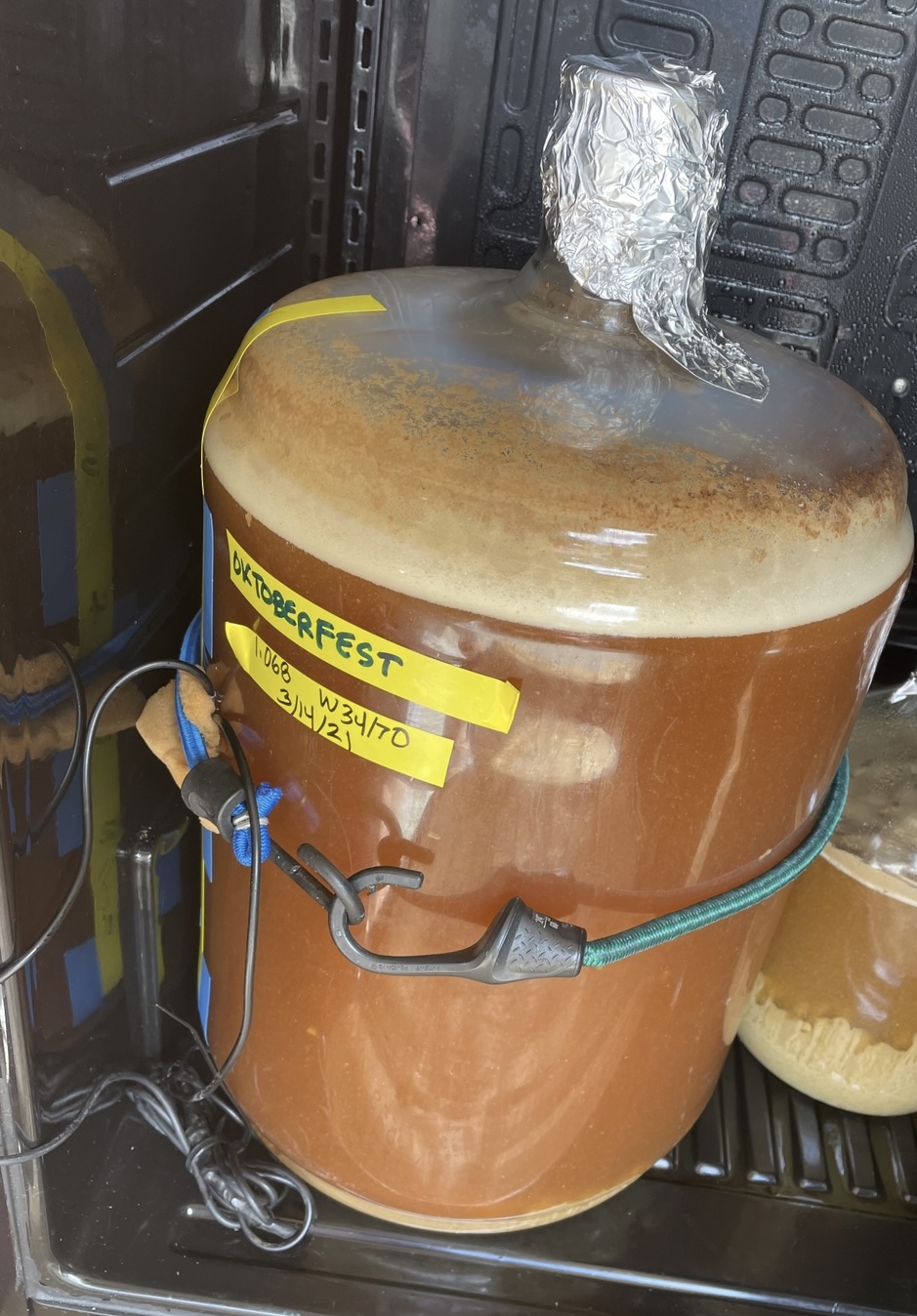Stikius
Well-Known Member
I would daisy chain them. No guesswork, and once the CO2 in the first keg drops, its output is effectively purging the next keg.
As for effectiveness, it depends a lot on the volumes involved, final ABV, spunding, etc. Are you purging two 5 gallon kegs with a 10+ gallon fermentation? If so, that will work fine.
IMO 5 gallons of ~5% ABV un-spunded beer can conservatively purge one 5 gallon keg really well, and a second one adequately for most uses*. 3rd keg iffy, and depends a lot on specifics.
https://www.homebrewtalk.com/thread...cheap-co2-storage-system.728099/post-10341634
*Tubing permiability may play a huge role in final O2 concentration, even for EVA barrier.
YMMV however when I'm doing a 5 gallon batch, it seems to produce enough CO2 to effectively purge it for NEIPA's and I don't have any quality loss while packaging to a keg. With a 10 Gallon batch, I'll daisy chain kegs.
Here's a tread based on purging with CO2 from Fermentation - https://www.homebrewtalk.com/threads/keg-purging-with-active-fermentation.628658/
I guess the CO2 production is linear, so assuming I'm doing 5 gallons it doesn't really matter if I want to purge one 5 gallon keg or five 1 gallon kegs? The same if I'm only doing 1 gallon I assume it would produce sufficient amount of CO2 to purge a 1 gallon keg.
Thanks for the links! I'll check them out









































![Craft A Brew - Safale S-04 Dry Yeast - Fermentis - English Ale Dry Yeast - For English and American Ales and Hard Apple Ciders - Ingredients for Home Brewing - Beer Making Supplies - [1 Pack]](https://m.media-amazon.com/images/I/41fVGNh6JfL._SL500_.jpg)



















